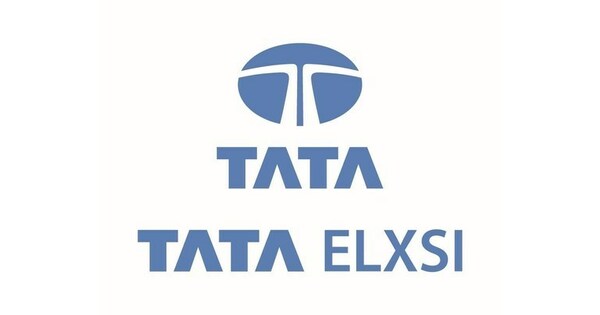The impact of crypto technology goes beyond crypto technology

After the drama of hibernation (or is it the other way around?) in 2022, many of us glass-half-full types have welcomed the opportunity to focus less on market movements and more on the impact of the continued evolution of crypto. technology can have on the world. And it’s potentially a pretty big impact, nothing short of spreading economic opportunity and individual empowerment while rewiring finance and culture, so it certainly deserves more attention.
Noelle Acheson is the former head of research at CoinDesk and Genesis Trading. This article is an excerpt from her Crypto is macro now newsletter, which focuses on the overlap between the changing crypto and macro landscape. These opinions are hers and nothing she writes should be taken as investment advice.
When we talk about focusing on technology, we generally mean ways to store and distribute information on networks with varying degrees of decentralization, which in turn will drive new forms of engagement and economic activity. What is still largely overlooked is the potential that crypto-technology has to support innovation in other areas of development. That influence will be felt far beyond blockchains, finance and culture.
The root of this influence lies in crypto markets. This may sound surprising given the devastating losses, bad actors, painful exploits and regulatory tightening that have defined the markets in recent months. It may also seem incongruous given the “institutionalisation” of market experimentation, with banks and official organizations testing familiar forms of issuance with new types of settlement – hardly the technology promise I’m referring to.
To draw on this thread a little more, I need to take a step back in time.
Newcomers to the manic world of crypto markets may not be aware of their origins. The first peer-to-peer crypto trades were made on what were essentially online message boards – low cost, easy to spin up, with a high degree of trust required. These evolved as demand grew, but early iterations were still rudimentary, uncoordinated, and made up over time. Then they began to become more sophisticated, especially as professional investors became interested, and today they are a complex mix of services, structures and best practices designed to support a significant flow of money throughout the system.
However, they are nowhere near as complicated as traditional exchanges. This is partly due to simplified settlement and storage. In part, that’s because while tendrils now extend into traditional finance, crypto platforms still operate largely in a niche area that regulators have yet to delineate with reams of rules. Moreover, they are easier to spin up in a number of configurations, for example centralized order book, decentralized liquidity pool or an as yet untested new structure. The relative flexibility, not enjoyed by traditional exchanges, is one of the crypto ecosystem’s superpowers.
It introduces risks: The often deplorable lack of transparency of platform operators, the absence of regulatory protection, hacks as well as coding errors are just a few that come to mind. However, as awareness increases, technological solutions improve, interfaces develop and regulators become more attentive, many of these can be reduced. Innovation is about focusing on potential while implementing safeguards – and this is where the flexible structure of crypto markets comes in.
The relative ease with which blockchain-based protocols and applications can raise money by creating tokens and distributing them to users and/or investors is now well known. “Initial Coin Offerings” (ICO) fueled the hype bubble in 2017, with tough lessons learned in the subsequent shake-out. Since then, however, tokens have often worked alongside equity stakes to kick-start or increase economic activity on new layer 1 blockchains, decentralized applications and creative initiatives.
Blockchain-based fundraising for blockchain-based projects: we get that. However, what we are overlooking is the potential that crypto has to support the collection and engagement of other, unrelated technologies, and furthermore, it can do so almost anywhere given the flexibility of the crypto market structure.
Politicians across the developing world may be heard talking about the importance of technology for economic growth, but few actually implement policies that move the funding needle. Increases outside the usual hubs tend to be small, as capital pools are less abundant than in the developed world, and as the target demographic is often more limited in size given geographic as well as network constraints. But this need not always be the case. More liquid, transparent and innovative markets can spark regional development, especially if cross-border investment is allowed, potentially leading to technological initiatives that are global in scale.
Clearly, digital ledger platforms are not essential for this type of fundraising. Startups have closed rounds, banks have lent and grants have been channeled without them so far. But the transparency and immutability of public blockchains can provide additional assurances to lenders, investors and startups, ultimately encouraging more interest from a wider range of participants. And they are easier to spin up than traditional exchanges, which reduces time and price-to-market.
Now, I’m not a trading system engineer or a blockchain developer, so there are parts of this framework I’m probably wrong, but the rails that the assets move on already exist, and ramps aren’t as difficult to design now as they were a few years ago . Platforms have emerged that essentially offer a plug-and-play back-end for exchanges, and the ecosystem has evolved to allow a degree of modularity in constructing the necessary stack of services – wallets, escrow, know-your-own – customer, strike, tax. accounting and more. The complicated part, I imagine, will be links to banks or payment services, but the growing use of stablecoins may provide a stop while the market adjusts.
What about the regulators? Obviously, they will have a say in terms of user protection, fund flows, foreign influence, etc. And anything new means risk, which regulators don’t like. But improved funding channels for local technologies that can increase employment, tax revenue and regional standing, while offering transparency in asset distribution, shouldn’t be too hard to sell, especially as governments change and/or are increasingly influenced by younger voters eager for the opportunity. to work with progress. There may also be pressure from local institutions eager for a wider range of assets to build portfolios with, as well as excitement from retail investors who do not live in more developed financial systems with more stable currencies and more readily available savings.
This is possibly naive, because change is difficult. But changes happen anyway, not just in local demographics, economic priorities and political sentiments. We are witnessing the reshaping of spheres of dependency, at a time when new tools for independence are increasing in resilience and reach. Examples of fundraising and engagement farming in areas with sophisticated economic systems will no doubt be noticed in regions seeking a new status.
They will also be encouraged by bright minds outside the typical hubs pushing for progress in projects that may end up contributing to human development. Crypto’s market flexibility is about much more than how easily tokens can be spun up, bought and transferred – it’s about facilitating economic activity in all areas. In sum, it is a superpower with a potential impact that goes far beyond its original mandate.
























